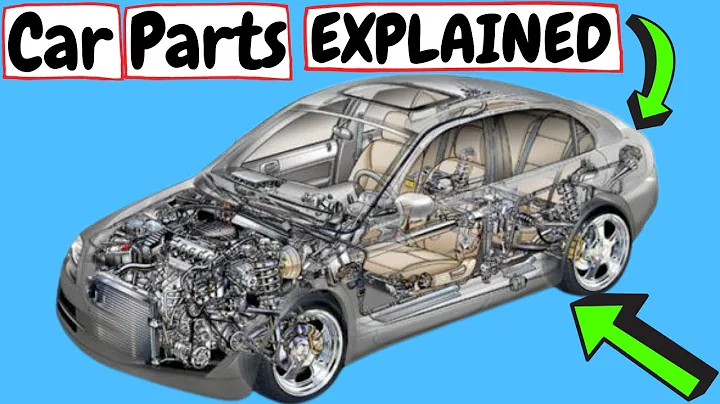

For a long time, the automobile aftermarket parts circulation market has been plagued by problems such as numerous parts category names, a mixed industry, difficulty in distinguishing authenticity from fake parts, asymmetry of circulation information, and difficulty in tracing basic information, which has restricted the healthy and orderly development of the entire industry and market.
In the development of the industry, standards have always played a guiding and normative role. Led by the Ministry of Commerce and approved by the National Standards Committee, the "Automotive Aftermarket Parts Circulation Information Management Requirements" (hereinafter referred to as the "Management Requirements") was compiled by Beijing Zhonghouyan Automotive Technology Research Institute Co., Ltd., Beijing Liping Information Technology Co., Ltd. and other units. The national standard was released in December 2021 and will be officially implemented on July 1.
industry experts believe that the "Management Requirements" will standardize the basic information content of automotive aftermarket accessories, the generation and use of information, and basic information traceability, etc., and provide a basis for information management, brand development, and basic information traceability of accessories circulation. .
01 "Independent aftermarket accessories" are mentioned for the first time
In the "Terms and Definitions" section of the "Management Requirements", "independent aftermarket accessories" is a new concept proposed for the first time. It originates from Article 17 of the "Automobile Sales Management Measures" that came into effect on July 1, 2017, which clearly defines four types of auto parts.
The first category is original accessories, which refers to parts provided or approved by the automobile manufacturer, using the automobile manufacturer's brand or its recognized brand, and manufactured in accordance with vehicle assembly parts specifications and product standards; the second category is accessories of equivalent quality. Refers to parts that have not been approved by the automobile manufacturer and are produced by parts manufacturers, and whose performance and quality meet the relevant technical standards for original parts; the third category is remanufactured parts, which refer to old automobile parts that have been remanufactured through technology, After process production, the performance and quality of parts meet the requirements of prototype new products; the fourth category is reused parts, which refer to parts that can be continued to be used after being dismantled from scrapped cars or replaced by repaired vehicles.
Liu Peiwen, one of the main drafters of the "Management Requirements" and secretary-general of the National Auto Parts Testing and Certification Alliance, said in an interview with a reporter from China Automobile News that considering the actual application of accessories in the automotive aftermarket and consumer demand, There are accessory products that have not been certified by the automobile manufacturer, are produced to different technical standards related to original parts, and use independent third-party brands. Such products cannot be strictly classified as "accessories of comparable quality".
refers to the domestic and foreign automotive aftermarket application experience for accessories, as well as the actual situation that consumers have different performance and quality requirements for automotive aftermarket accessories, and combined with market and industry development needs, with the approval of the Ministry of Commerce, specially added " "Independent aftermarket accessories" category to meet the actual demand for the circulation of automotive aftermarket accessories.
According to Liu Peiwen, "independent aftermarket parts" will become the fifth category of auto parts in the future, and are expected to be cited and added when the "Automobile Sales Management Measures" are revised in the future.
02 Achieve “traceability” of accessory information
Data shows that currently, the average age of vehicles in use in our country has exceeded 7 years. As the average age of vehicles in use continues to increase, the demand for repair and maintenance of older vehicles has increased. Will further promote the demand for accessories.
As the understanding of automobiles gradually matures, consumers pay more attention to after-market service issues such as ownership costs , regional convenience, accessory quality, residual value , etc., and their spending on after-sales services gradually increases, and those who accept after-market services Willingness has increased significantly, and China's automotive aftermarket parts market has huge development potential. It is predicted that the overall scale of the industry will exceed 800 billion yuan in 2022. With the huge market scale of
, there have been practical problems of "information asymmetry" and "information opacity" for a long time.

"There is a prominent problem in the auto parts market. After manufacturers produce a large number of auto aftermarket parts, they are bought out by middlemen, who then sell them to consumers under their own brands." In Liu Peiwen's view, Unnecessary middlemen in the circulation link prevent direct contact between manufacturers and the C-end market, and products cannot be traced, which is not conducive to manufacturers becoming bigger and stronger.
If we want to encourage high-quality companies to stand out and gradually eliminate fake and shoddy products, we must achieve information transparency, that is, information traceability, so that consumers can know who the manufacturer is and who sells it to the market.
"Management Requirements" focuses on solving the problem of information traceability. In order to facilitate consumers' identification and traceability of accessories, and to avoid increasing the burden on market entities and facilitate the popularization and implementation of accessories coding, the accessories circulation information content is divided into basic information and sales information. The basic information of accessories required for information traceability includes accessory types, product information and manufacturer information that consumers should know.
accessory circulation information is mainly generated by accessory manufacturers and accessory sellers. Among them, the accessory manufacturer generates basic information about accessories and provides traceability QR codes according to standard requirements to facilitate the traceability and anti-counterfeiting of accessories; the accessory seller generates sales information and signs a sales contract with the buyer when selling accessories and attaches a product sales list to facilitate Consumers check and verify accessory circulation information.
In terms of the use of accessories circulation information, the "Management Requirements" put forward requirements for accessories sellers, auto repair companies , and end users, so that basic information on accessories can be traced without hindrance, effectively protecting consumers and promoting accessories. Consumption.
determines the basic information traceability of accessories based on the principle of global item traceability, which requires "source coding" and determines the categories of traceable accessories based on actual market demand. To assign to , you need to "encode" it first. For a wide range of auto parts, this is a huge project. Therefore, based on the actual situation, the "Management Requirements" only require that 113 types of accessories commonly used in the automotive aftermarket are traced and anti-counterfeited through QR codes to trace the basic information of the accessories and be compiled in accordance with internationally accepted coding technical requirements. Accessories manufacturing enterprises must The implementation of this standard can be completed without major technical transformation and cost investment.
03 Publicity and implementation of testing and certification are carried out simultaneously
"Independent aftermarket accessories" have an official definition and information traceability management methods, but relevant accessories companies need to actively participate.
To this end, relevant government departments and relevant industry organizations and enterprises involved in the preparation will take the form of training in many places across the country to publicize and implement the standards. Focus on Jiangsu, Zhejiang, Shanghai, Guangdong, Hubei, Shandong, Jilin, Chongqing, Guangxi, Hunan and other auto parts production bases, and promote them one by one city by city. After the participation of
companies, there is still a key link missing, that is, testing and certification to solve the problem of "qualified or unqualified, good or bad quality" of auto parts.
To this end, relevant industry organizations and enterprises initiated the establishment of the National Automobile Parts Testing and Certification Alliance. The members of the alliance include national automobile and parts testing and certification centers, national innovation centers, scientific research institutes, automobile insurance companies, etc.
For the development of the post-independence market, the introduction and implementation of the "Management Requirements" are of great significance. It is understood that this standard is in accordance with the relevant national regulations and requirements for the circulation management of the automobile aftermarket, improves the transparency of the circulation information of automobile aftermarket parts, promotes the establishment of a mutually supporting and coordinated parts circulation information traceability system, and focuses on large and safe automobile aftermarket circulation. Traceability and anti-counterfeiting of some accessories with high sex requirements and high value can make the traceability of circulation information standardized, normalized and long-term, which can accurately and effectively expand the procurement channels of accessories, reduce the operating costs of enterprises, better serve consumers and promote High-quality development of the automotive aftermarket industry.
Text: Zhang Zhongyue Editor: Jiao Yue Layout: Li Peiyang
Add a chicken leg to the editor!





















